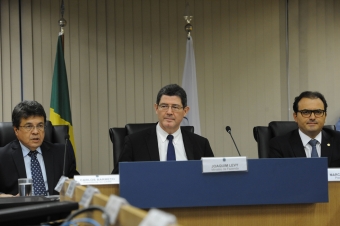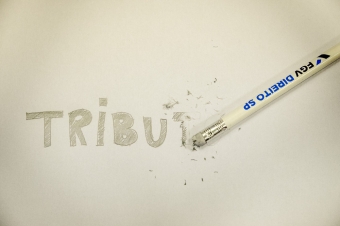Summary:
It is an activity that focuses on the tax exemption of books, newspapers, periodicals and the paper used for their printing. It is intended that students be able to build a legal argumentation for doubtful cases. In order to that, they have direct contact with materials that may or may not be categorized as books, newspapers or periodicals and debate whether they are covered by the tax immunities provided for in art. 150, VI, d, of the Federal Constitution.
Objective:
- GENERAL GOAL: to address controversial issues on the subject of tax immunities.
- SPECIFIC GOAL: to take the students to analyze the art. 150, VI, d, of the Federal Constitution, which deals with immunities of books, newspapers, periodicals and the paper used for printing. There is a lot of debate about these immunities in the Federal Supreme Court, as in other courts, especially facing the range of materials and difficulty of framing them. It is expected that students understand the difficulty of that particular characterization, considering not only the technological advances (such as e-books), but also the editorial diversity in the market.
- It is intended to develop in students the ability to argue and articulate the concepts to search for an appropriate answer and of a critical reflection.
Dynamics:
- METHOD: role-playing, in which the students have taken a perspective of action and should argue from that position.
- REQUIREMENTS:
For students, there was an obligatory previous reading:
(i) MOSQUERA, Roberto Quiroga; NOVELLO, Guilherme Lautenschalaeger. Imunidade dos livros eletrônicos e a extensão do art. 150, VI, ‘d’, da Constituição Federal. In PISCITELLI, Tathiane (coord.). O Direito Tributário na prática dos Tribunais Superiores: Sistema Tributário Nacional e o Código Tributário Nacional em debate. São Paulo: Saraiva, 2013. p. 23-54;
(ii) texto geral sobre imunidades tributárias (SCHOUERI, Luis Eduardo. Direito Tributário. São Paulo: Saraiva, 2014 or CARVALHO, Paulo de Barros. Curso de Direito Tributário. São Paulo: Saraiva, 2014).
The preparation for the professor involved the choice of materials to bring to class, using as criteria the difficulty of identification, such as books, periodicals or newspapers because of their shape, their composition or other peculiarities (as an example: magazines with toys, e-books, children's book in a train format, etc.), regardless of whether consolidated positions in the Federal Supreme Court.
- INTRODUCTION TO THE DYNAMICS: the professor presented in 10 minutes the constitutional text of the article relating to immunities, explaining that she would focus on the immunity of books, periodicals and newspapers.
- DEVELOPMENT OF THE DYNAMICS: the room was divided into groups of four components (about 10 groups, chosen by the students), and it was delivered to each of them one or two concrete objects which, by its shape, composition or other peculiarities, were able to generate controversy over the application of immunity. Furthermore, about 15 materials were used for the class, such as calendar, yearbooks establishments, audiobooks or CDs that accompanying a book, toys in book format, calendar, supermarket flyers, text readers and e-books (with or without Wi-Fi), books in toy format, books that bring papers for origami, books that come with toys or puppets, completion of course work which take book form, among others.
The students took on the role of Federal Revenue auditors and must decide whether they taxed it or not, and why. The professor circulated among the groups and made this control of the debates that lasted 20-25 minutes. If the discussion in the group finished, the professor changed the objects or talked about its problems with the students. Each group, through a rapporteur, presented the material that was analyzed and concluded about the incidence of immunity or not of the object that was given to them. In 30 minutes, all groups were heard and it was possible to comment on the solution of the colleagues.
- END OF THE DYNAMICS: In the end, in approximately 30 minutes, the professor presented some cases decided by the Federal Supreme Court and the students discussed these critically judged.
- ATTENTION IN THE CLASSROOM:
1) If a group have quickly resolved a debate, there could be an exchange of material with other groups.
2) It is recommended the knowledge of the cases that were already discussed in the Federal Supreme Court.
3) It is recommended that the professor searches books and periodicals concepts and characteristics (for example: writing or not content of the book, definition of the Houaiss, ISBN number, content type - whether educational, cultural or not).
Evaluation:
- FEEDBACK: at the closure, the professor asked the students, individually or collectively, testing and questioning them from their opinions.
- GRADE EVALUATION: the evaluation was made from the participation of students, which is one of the elements that made up the final score of participation (grade that composed 40% of the final course grade). The professor had the help of a monitor that marked the participation of each student. No response correction criteria were used, but it was used the student's ability to articulate legal concepts for a solution.
Observation:
1) The professor considered 15 an appropriate amount of material in view of the number of students and groups. The professor should adjust the dynamics to the amount of students in their course.
2) It could be used in graduate course stricto sensu level (professional masters) and undergraduate.






